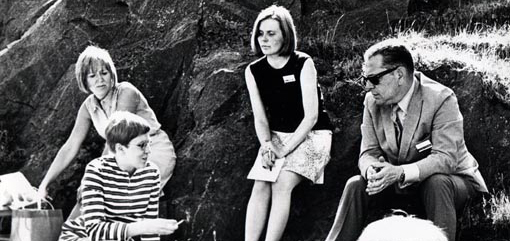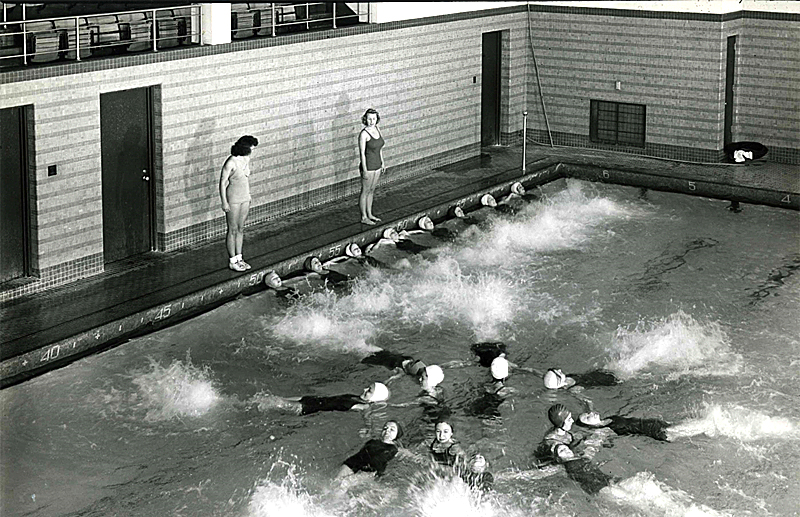“When the number of visitors to a Danish swimming bath suddenly plummeted, the city fathers came to the conclusion that it was on account of the dilapidated state of the building,” says Marco Steinberg, Director of Strategic Design at Sitra and one of the brains behind Helsinki Design Lab.
“Nevertheless,” says Steinberg, “they sent a designer round to confirm this, as well as to make plans for the construction of a new swimming bath. They were right about the condition of the building. However, the decision-makers were also stunned to hear that the problem and the designer’s solution related to the city’s recently revised bus schedules,” he adds, illustrating the use of strategic design in problem-solving.
”We acknowledge that we have a problem, but we don’t know exactly what it is. When this happens, it is essential to ask the right questions and use them to create new structural, operating and service models.”
And that is exactly what the designer did. Comparing the bus schedule to the pool’s opening hours, he soon realised what the problem was: city residents couldn’t get to and from the swimming bath conveniently, causing its visitor rates to drop drastically.
Administration meets design
Where conventional design seeks solutions for spaces and consumables, strategic design focuses on awkward problems and poor decision-making. The world has become so complex and dependent on a multitude of factors that no single correct answer exists to problems such as climate change, environmental issues and new types of working life.
In the last five years, Sitra’s Helsinki Design Lab has opened new perspectives, broadened horizons and provided practical design support for decision-makers. The crowning glory of HDL2013 was the event held at Kellohalli, Helsinki from 11am to 11 pm on 10 June, when passionate spokespersons for strategic design convened to share lessons learned around the world and to discuss their current projects and the solutions discovered through them.
Background for Sitra’s design activities provided by Helsinki Design Lab 1968
Sitra had already established a connection with design in 1968, when a group of younger-generation Finnish designers, architects and engineers approached the first president of Sitra with a proposal for organising a new type of summer seminar based on industrial design. This marked the beginning of a two-day event held at the Suomenlinna fortress, which brought together a versatile group of the hottest designers of the time, including Buckminster Fuller, Kaj Frank, Victor Papanek and Antti Nurmesniemi.

Back in 1968, those in Sitra probably didn’t fully understand what the design debate was all about. Then again, the funding wasn’t huge either. The seminar was nevertheless groundbreaking for the design people. Forty years later, in 2008, a group partly composed of the same designers – no longer so young – contacted the president of Sitra once again, to present their idea for an anniversary design seminar. The result was Helsinki Design Lab 2008: a three-day event with more than one hundred specialists, each a leader in their respective field, discussing the theme of design’s potential in the 21st century.
At the same time, design was gaining more ground at Sitra; a team was established and tasked with the integration of strategic design at Sitra, while conducting a discussion on the role of design as a social problem-solver, experimenting with various methods and supporting the efforts of developers of administration. This generated numerous publications, guides, events and blog posts. There was plenty of international debate and good questions were posed.
Solutions through experimentation – examples of strategic design projects
At HDL2013, Marco Steinberg, Justin W. Cook, Bryan Boyer and Dan Hill gave presentations on undertakings at Sitra which have utilised the strategic design approach to finding solutions to social challenges.
The Low2No project led to the development of an internationally significant innovative city block and operating model, based on the principle of sustainable development. Development work under Low2No included socially sustainable, low-energy and low-carbon engineering and construction, resulting in a sustainable built environment.
In 2012, the project was transferred to two Finnish housing companies, SRV and VVO. They will continue planning of the Airut block, to be constructed in Jätkäsaari, Helsinki. Low2No is derived from the phrase ’from low carbon to no carbon’. The operating model and lessons learned from the Low2No project will be compiled into a publication in late 2013.
The Design Exchange Program (DEP) was launched on the basis of a joint initiative between Sitra and the Ministry of Employment and the Economy. It was one of the projects in the World Design Capital (WDC) year. The long-term goal of the DEP was to increase strategic design expertise and to foster a new generation of strategic designers in Finland, for future leverage by public sector organisations.
In practice, the DEP project has involved the development of new approaches and design capacities, as well as supporting their implementation. Four public sector organisations hired a DEP designer for one year. They were stationed at the Ministry of Employment and the Economy, the Ministry of the Environment, the City of Lahti Land Use Unit and the City of Helsinki Social Services Department. The Design Exchange Program will end in November 2013.
The Brickstarter blog has discussed decision-making based on participation and openness. One of the proposed solutions led to the development of a new type of web-based co-development platform for citizens, enterprises, civil servants and politicians, in order to facilitate decision-making. Read more about Brickstarter on the project blog, or download the Brickstarter publication as a pdf.
Open Kitchen brought together 13 participants with different cultural backgrounds, on a three-week course to learn what it’s like to own a food business in Finland. The course was not about learning to cook; it provided the participants with basic information on starting their own food business. The aim of the course was to enrich the local food offering and, as a result, emphasise the social and health effects of food.
Continue to work and ask questions
The lessons learned during the last five years are currently being compiled, and will be exploited in Sitra’s future efforts. The exact method will be revealed soon. Projects come to an end, but since solving society’s awkward problems calls for a delicate and comprehensive approach, the right questions will also be asked in the future.
The situation in Denmark arose because the bus schedules had been revised without taking account of the schedule’s impact on other factors. Visitor rates to the swimming bath would not have increased with the building of a brand new swimming bath, unless the bus schedule problem was solved. Once you discover the true nature of the problem, the solution can be simple.
For further information, please contact:
Marco Steinberg, Director, Strategic design, +358 29 461 8233
Other sources of further information:
Helsinki Design Lab and strategic design: www.helsinkidesignlab.org
Low2No: www.low2no.org
Design Exchange Programme: www.insidejob.fi
Brickstarter: www.brickstarter.org
Open Kitchen: www.openkitchen.fi
